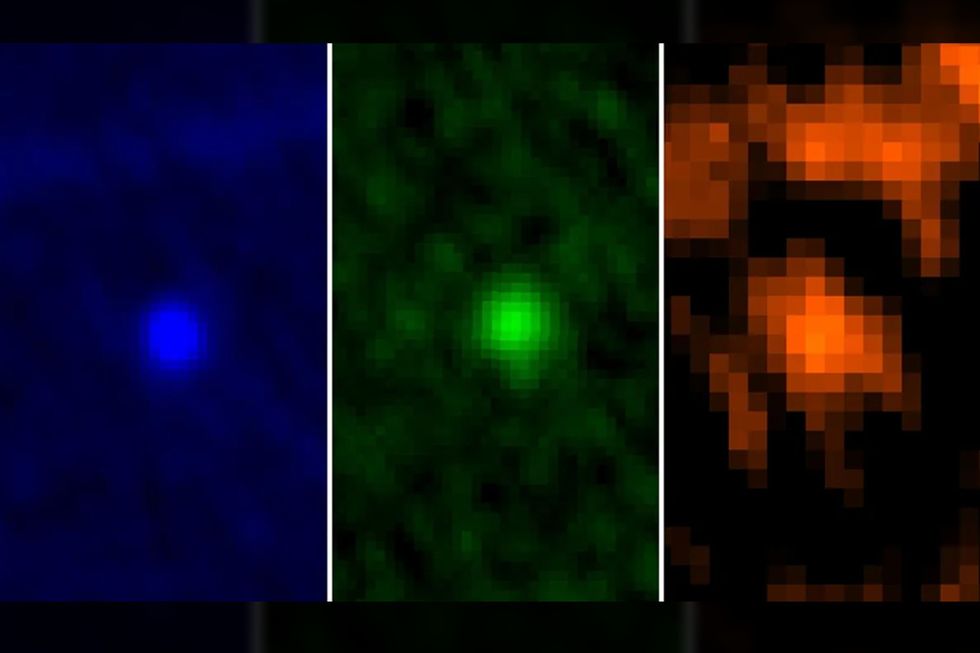Harriet Brewis
Jul 11, 2025
What If an Asteroid Were on a Collision Course to Hit Earth?
Underknown / VideoElephant
We’ve enjoyed a number of celestial spectacles in recent years – from total solar eclipses to stunning auroras – and yet, soon Earth will witness the space event to trump them all.
In the next five years, we will be treated to a visit from asteroid 99942 Apophis and it’ll get so close, we’ll be able to see it with the naked eye.
Indeed, the imminent fly-by is so special, the European Space Agency (ESA) had hailed it as "one of the rarest space events of our lives".
“Scientists believe that an asteroid as large as Apophis only comes this close to Earth once every 5,000 to 10,000 years,” the ESA added in a Twitter/X post.
The singularity of this occurrence is down both to the asteroid’s proximity to Earth and its impressive size.
The space rock measures around 375 metres (1,230 feet) in diameter, making it a substantial missile.

Apophis was first discovered in 2004, at which point experts placed it at level 2 on the Torino impact hazard scale.
According to this index, a score of 0 means the likelihood of an impact with our planet is more or less zero, while 10 means a collision is “certain” and “capable of causing global climatic catastrophe that may threaten the future of civilisation as we know it, whether impacting land or ocean."
So while level 2 is low – denoting objects that make a “somewhat close but not highly unusual pass near the Earth" – it’s not low enough to have its potential risks dismissed.
And, indeed, observations made in December 2004 pushed the asteroid up to a level 4 on the Torino scale, with the chance of it hitting Earth in 2029 increasing to 1.6 per cent.
And if one per cent doesn’t sound too scary, just note that, according to NASA calculations, a one per cent chance of collision means an object is still capable of causing “regional devastation”.
In fact, over the years that space agency pros have spent hunting and monitoring near-earth objects (NEOs), no object has surpassed a level 4 on the Torino scale.
And its potential threat to Earth even earned the asteroid the name Apophis in honour of the Ancient Egyptian god of darkness and disorder.
The good news is that NASA has since stressed that, “most likely, new telescopic observations will lead to [Apophis’s] re-assignment to Level 0.”
And whilst we will see a number of close encounters with the asteroid over the coming years, collisions have been ruled out in 2029, 2036 and 2068.
“A 2068 impact is not in the realm of possibility anymore," Davide Farnocchia of NASA’s Center for Near-Earth Object Studies said in a statement, adding: “Our calculations don’t show any impact risk for at least the next 100 years."
Still, Apophis will get particularly close in 2029, skirting within 32,000km (20,000 miles) of the Earth's surface – which is closer than some of our man-made satellites.
It will be so close that it should be visible from the Eastern Hemisphere without the aid of a telescope or binoculars, as IFL Science notes.
During the approach, NASA plans to visit the asteroid using its OSIRIS APEX asteroid sampler.
"Our planet’s gravitational pull is expected to alter the asteroid’s orbit, change how and how fast it spins on its axis, and possibly cause quakes or landslides that will alter its surface," NASA said of its intended mission. "OSIRIS-APEX will allow scientists on Earth to observe these changes.
“Additionally, the OSIRIS-APEX spacecraft will dip toward the surface of Apophis – a 'stony' asteroid made of silicate (or rocky) material and a mixture of metallic nickel and iron – and fire its engines to kick up loose rocks and dust,” it continued.
“This manoeuvre will give scientists a peek at the composition of material just below the asteroid’s surface."
The ESA is also hoping to pay the asteroid a visit, noting that studying the flyby will help us better equip ourselves against potential future collisions with similar objects.
"Earth’s gravity will 'stretch' and ‘squeeze’ Apophis, triggering landslides and revealing lots about the asteroid’s material, structure, density and cohesion," the space agency said.
"This knowledge will help us protect Earth in future."
Still, on this occasion it’s nice to know that the asteroid doesn’t pose a threat, just a rare and beautiful sight.
This article was originally published on 1 July 2024
Why not read...
France unveils plans for robot army by 2040
Tragic reason why there are no great white sharks in aquariums
Sign up for our free Indy100 weekly newsletter
How to join the indy100's free WhatsApp channel
Have your say in our news democracy. Click the upvote icon at the top of the page to help raise this article through the indy100 rankings
Top 100
The Conversation (0)














